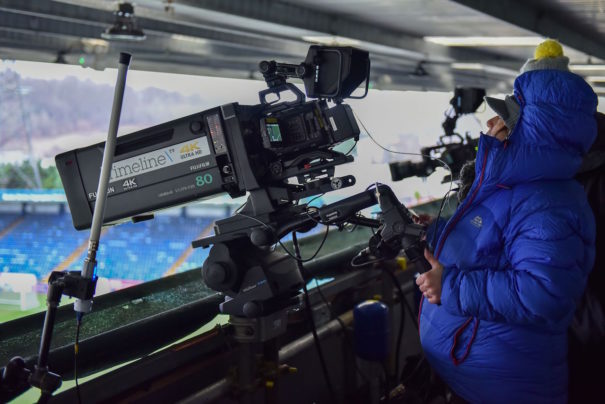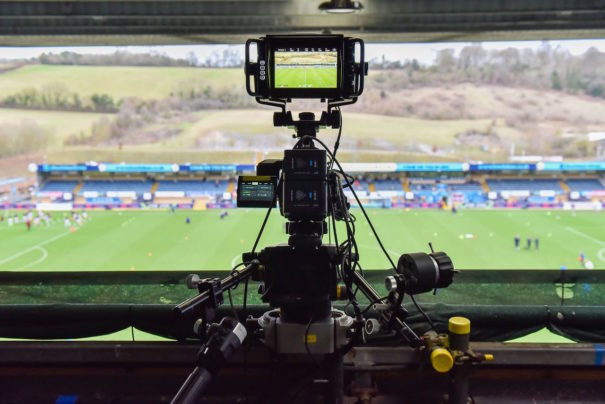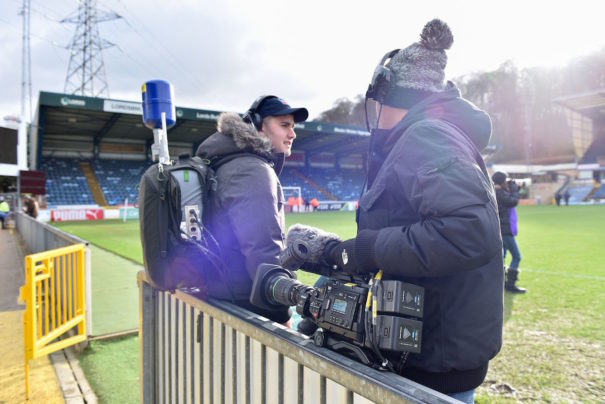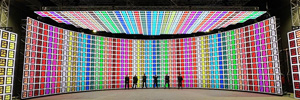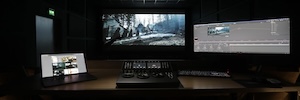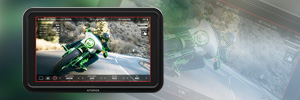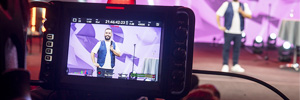Timeline Tv emplea cámaras Ursa Broadcast para producir remotamente la liga inglesa de fútbol fememino
Para la producción remota, los ingenieros de Timeline diseñan un sistema basado en una tarjeta Blackmagic 3G-SDI Shield for Arduino usando el protocolo de control SDI para cámaras Blackmagic.
Timeline TV ha implementado una solución personalizada para producciones a distancia con tarjetas Blackmagic 3G-SDI Arduino Shield y cámaras Ursa Broadcast of Blackmagic Design a fin de cubrir la liga de fútbol femenino en Inglaterra (WSL).
Con el propósito de cumplir con los requisitos para cubrir los partidos en directo de la temporada 2018/2019, la primera como liga profesional a tiempo completo, el equipo de Timeline tuvo que rediseñar el sistema móvil con múltiples cámaras a fin de poder desplegarlo en cualquier estadio del país, a la vez que transmitían el contenido con la calidad esperada por su socio productor Whisper Films.
El director ejecutivo de Timeline, Dan McDonnell, explica que el modelo Ursa Broadcast fue la elección más acertada. “Estamos orgullosos de poder transmitir calidad profesional para nuestros socios creativos, y la cámara Ursa Broadcast con objetivos B4 ofrece imágenes excelentes, tanto fuera como dentro del campo de juego”, ha comentado. Las Ursa están empleando en estas retransmisiones objetivos de Fujinon and Canon.
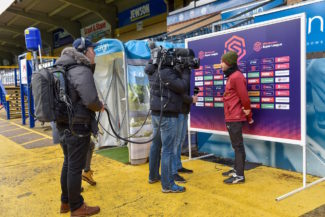 Gracias a que el modelo Ursa Broadcast es muy fácil de controlar, el equipo de ingenieros del canal de televisión tuvo la oportunidad de desarrollar su creatividad. “Las plataformas para controlar las cámaras a distancia eran esenciales, y requeríamos un nuevo acercamiento a la transmisión de datos, todo esto a la vez que manteníamos el procedimiento en el campo lo más sencillo posible”, sostiene Dan. “No había ninguna otra opción en el mercado que nos ofreciera la misma flexibilidad, la calidad o el control, a menos que instaláramos un sistema móvil completo”.
Gracias a que el modelo Ursa Broadcast es muy fácil de controlar, el equipo de ingenieros del canal de televisión tuvo la oportunidad de desarrollar su creatividad. “Las plataformas para controlar las cámaras a distancia eran esenciales, y requeríamos un nuevo acercamiento a la transmisión de datos, todo esto a la vez que manteníamos el procedimiento en el campo lo más sencillo posible”, sostiene Dan. “No había ninguna otra opción en el mercado que nos ofreciera la misma flexibilidad, la calidad o el control, a menos que instaláramos un sistema móvil completo”.
Los ingenieros de Timeline crearon este sistema alrededor de una tarjeta Blackmagic 3G-SDI Shield for Arduino usando el protocolo de control SDI para cámaras Blackmagic y desarrollaron una solución de transmisión IP y un bonding de señales 4G basada en el códec H.265. Esta, que cabe en una mochila, está compuesta por un transmisor y los sistemas de control de cámaras necesarios a fin de transmitir la señal en directo de vuelta a la oficina principal de Ealing Studios, donde cada fin de semana se produce la cobertura de los partidos.
Señales confiables y consistentes
“Conseguimos eliminar la necesidad de contar con un router estático, que normalmente está situado con una unidad de control de cámaras para transmitir las señales. Se envían tanto las en alta resolución provenientes de las cámaras, como una adicional en baja resolución que contiene todos los ajustes necesarios. Trabajar con canales IP proporciona señales confiables y consistentes que se envían desde donde nos encontramos, independientemente del lugar, y esto combinado con el protocolo abierto de Blackmagic nos ha ofrecido la flexibilidad de diseñar una solución para producciones a distancia de alta calidad que cumple con los estrictos requisitos de la cobertura de deportes en directo”, afirma McDonnell
Timeline continuará emitiendo la liga de fútbol femenina mediante la solución a distancia, pero cabe destacar que la eficiencia y las capacidades técnicas se pueden trasladar fácilmente a otras ligas o campeonatos deportivos y giras de eventos.
“La habilidad para controlar un sistema multicámara por completo mediante señales IP significa que podemos producir coberturas extensas de eventos populares desde cualquier parte del mundo sin necesidad de contar con un gran equipo en los recintos. Una vez que los operadores están en su lugar, basta con encender los recibidores y las cámaras, y ya estamos listos para trabajar. El equilibrio entre la velocidad, la flexibilidad y la calidad a un precio económico solo ha sido gracias a Blackmagic Design”, concluye.
Did you like this article?
Subscribe to us RSS feed And you will not miss anything.



